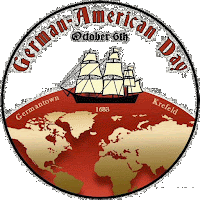Posted on October 6, 2021
This is an update of my post published on October 6, 2010:
Born on this day in 1914 in Norway, Heyerdahl became an ethnographer. What the heck is an ethnographer, you ask? This is an anthropologist who deals with the scientific description of specific human cultures. Heyerdahl had a background in geography and zoology, which came in handy for his first expeditions to remote South Pacific islands, where he was to study how animals first came to the islands.
Heyerdahl and his Kon-Tiki expedition proved it was possible when they went to Peru and used native materials and Inca techniques to build a raft with sails and a hut-like shelter, based on the old drawings. They then set out on a 4,300-mile (8,000 km) journey!
The Kon-Tiki traveled across the South Pacific for 101 days. The balsa-wood raft turned out to be easy to maneuver, and fish congregated between the logs in such great numbers that the expedition members could stay fed and hydrated. The raft carried the adventurers from Peru to the Tuamotu Islands.
Since this famous voyage, other rafts have repeated the feat. Heyerdahl continued his career with other exciting expeditions (such as crossing the Atlantic Ocean with a papyrus reed boat, the Ra).
Heyerdahl built up some theories about the colonization of the South Pacific Islands based on some old legends and some likenesses of statutes and structures and other artifacts. His ideas were exciting to many but never gained acceptance by anthropologists, and later data such as mitochondrial DNA has shown that the majority of anthropologists were right, and Heyerdahl wrong.
However, Heyerdahl's spectacular expeditions did rouse public interest in anthropology and also showed the benefits of experimental archaeology.
Do you have a theory of how an ancient culture could have built a pyramid, a henge (like the famous Stonehenge), or a monumental sculpture? Maybe you, too, can work to gather a team to try out your ideas: recreate ancient tools using native materials—and build a similar structure yourself!
Also on this date:

Birthday of civil rights activist Fannie Lou Hamer
(First Wednesday of October)
National Kale Day
(First Wednesday of October)
National Pumpkin Seed Day
(First Wednesday of October)
(First Wednesday of October)
Plan ahead:
Check out my Pinterest boards for:
And here are my Pinterest boards for:





















No comments:
Post a Comment